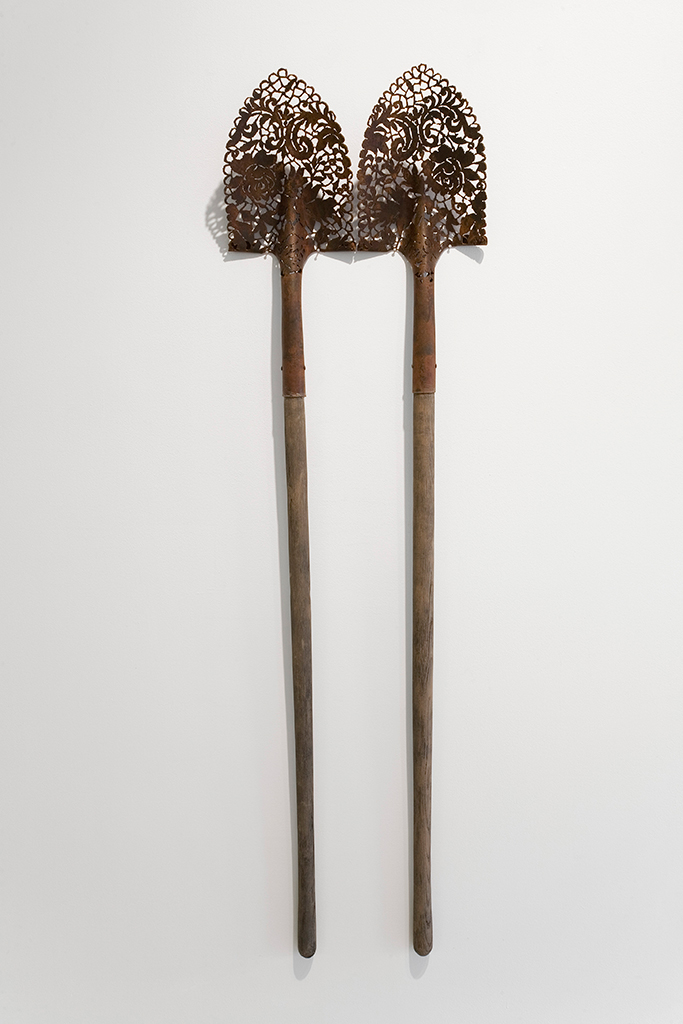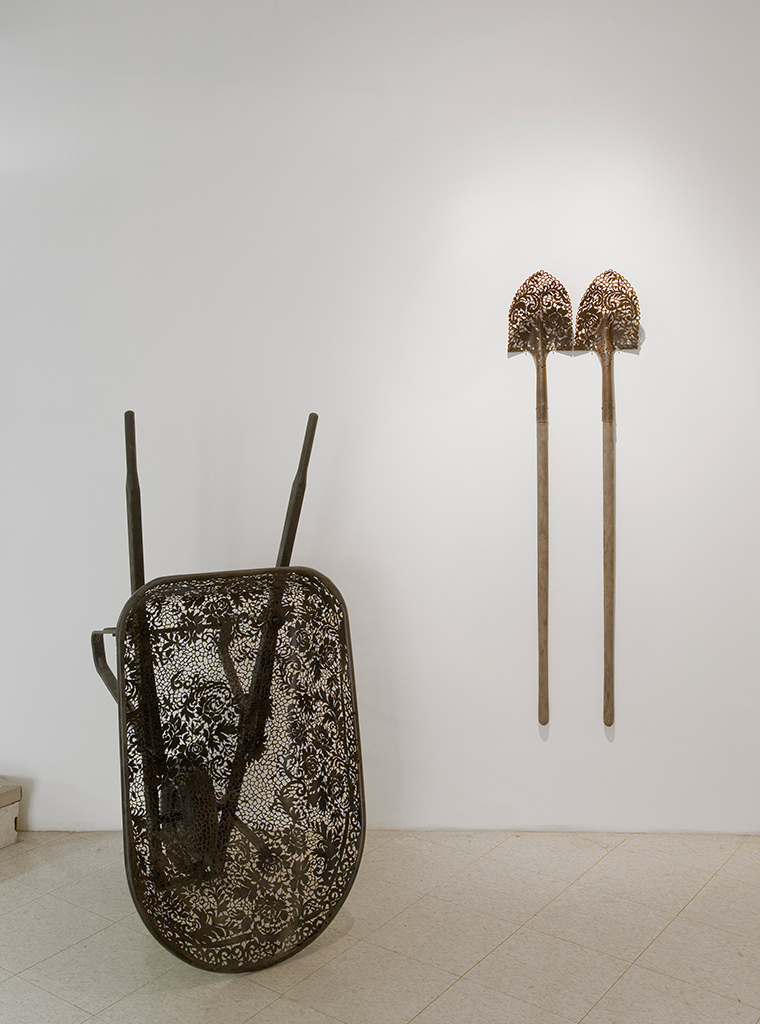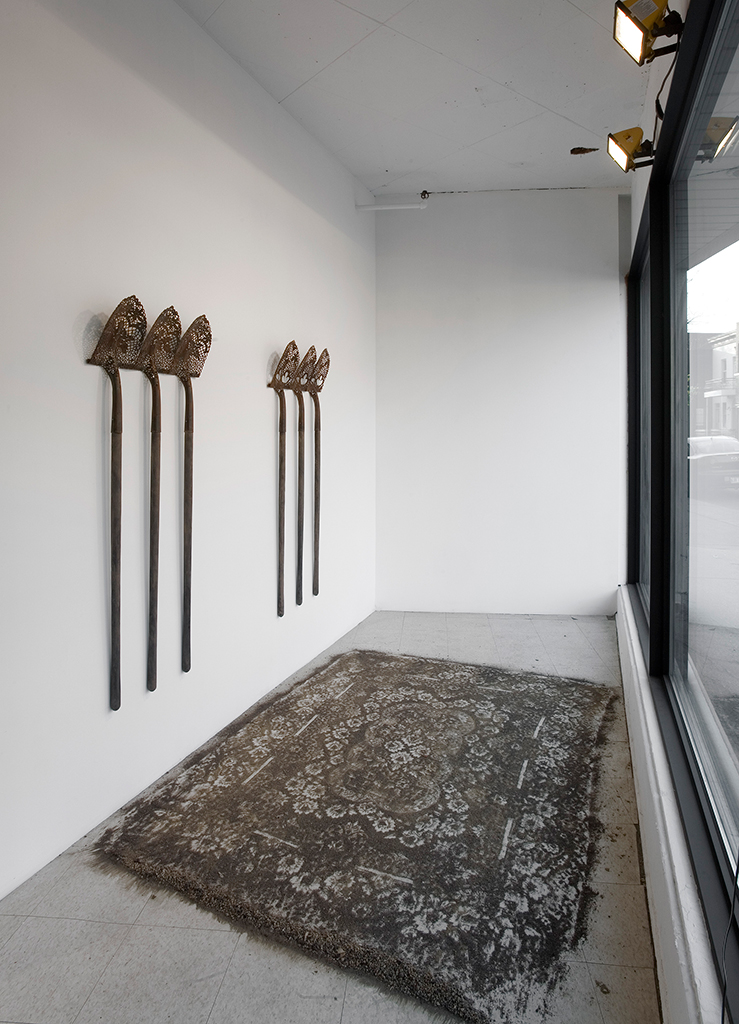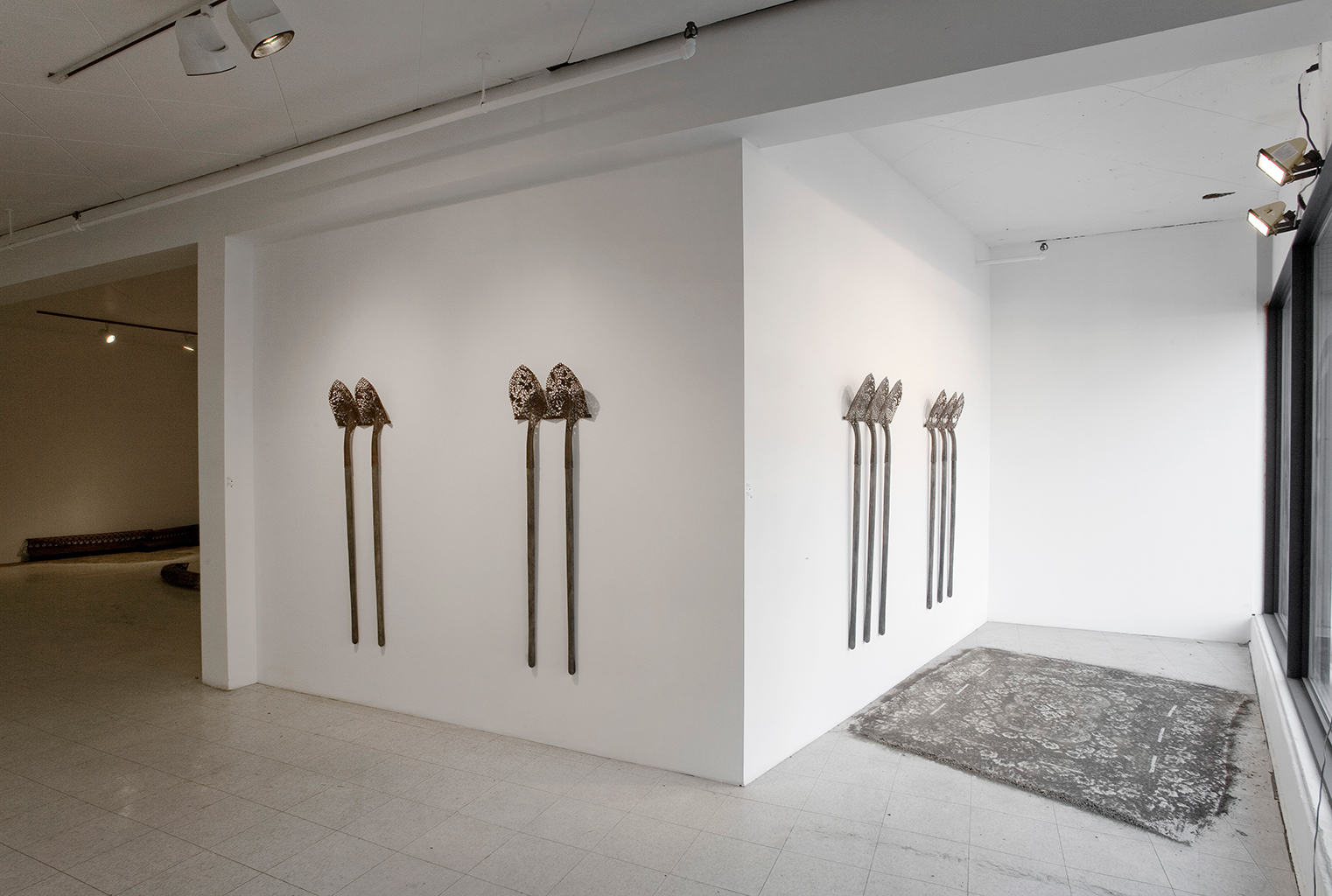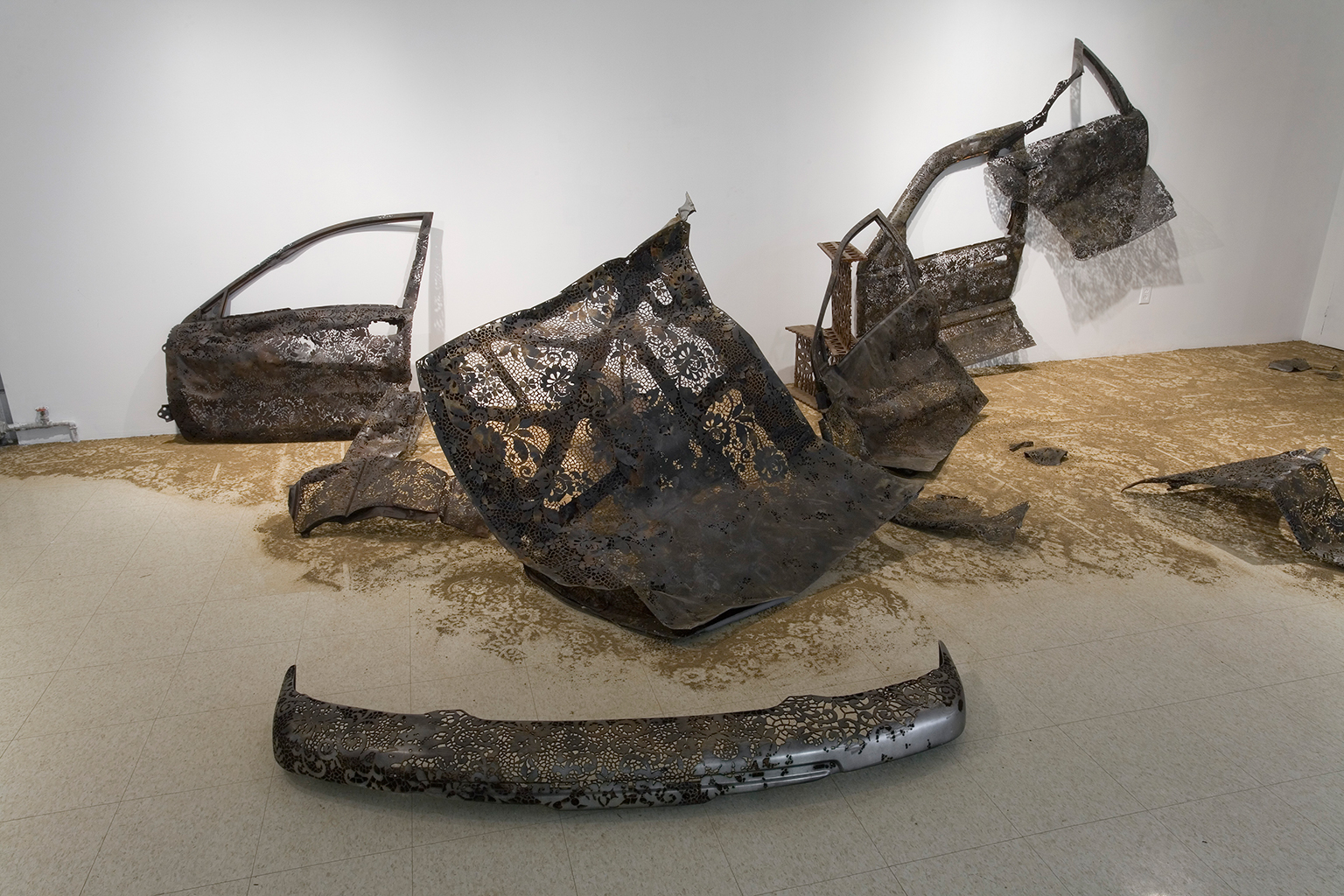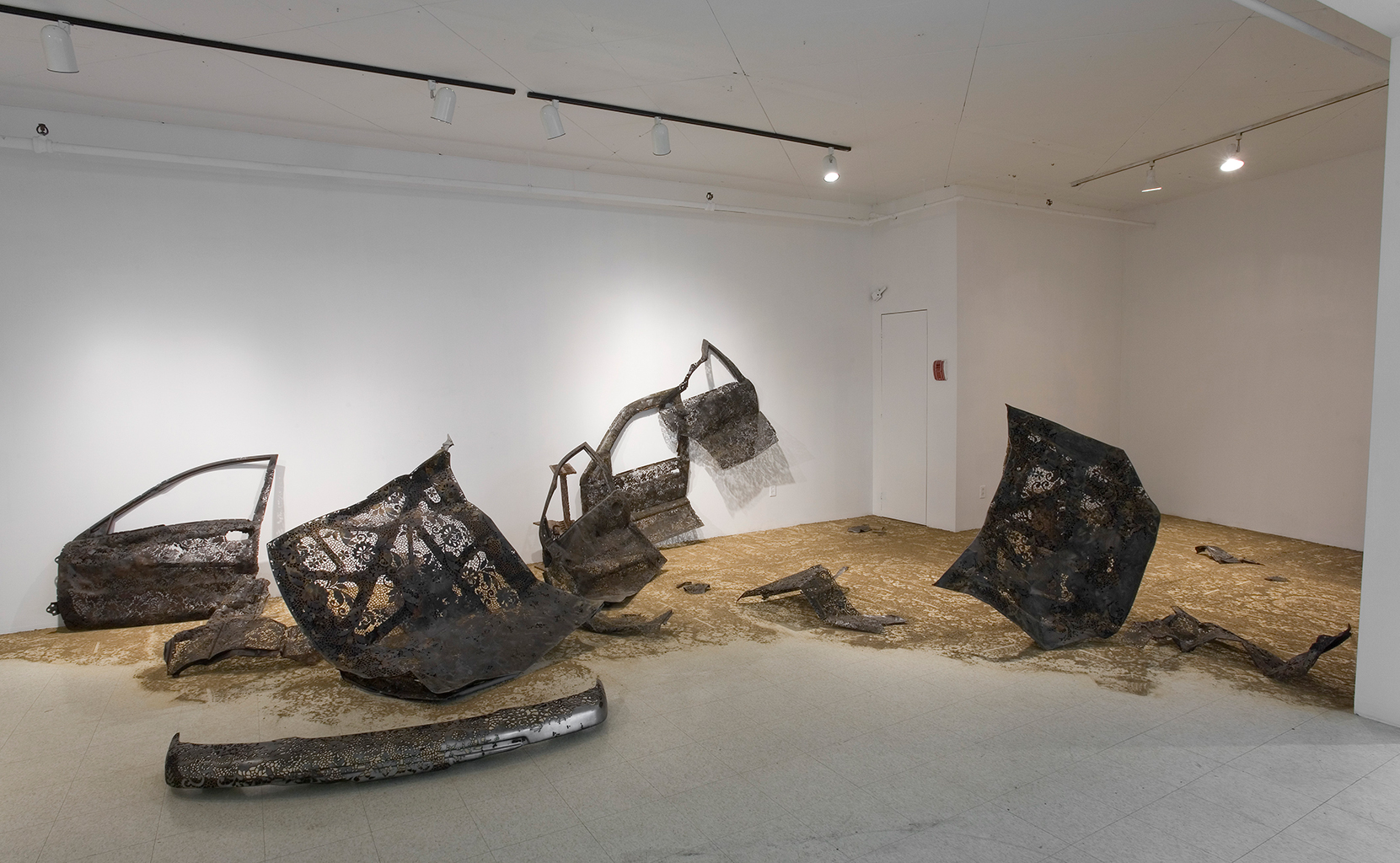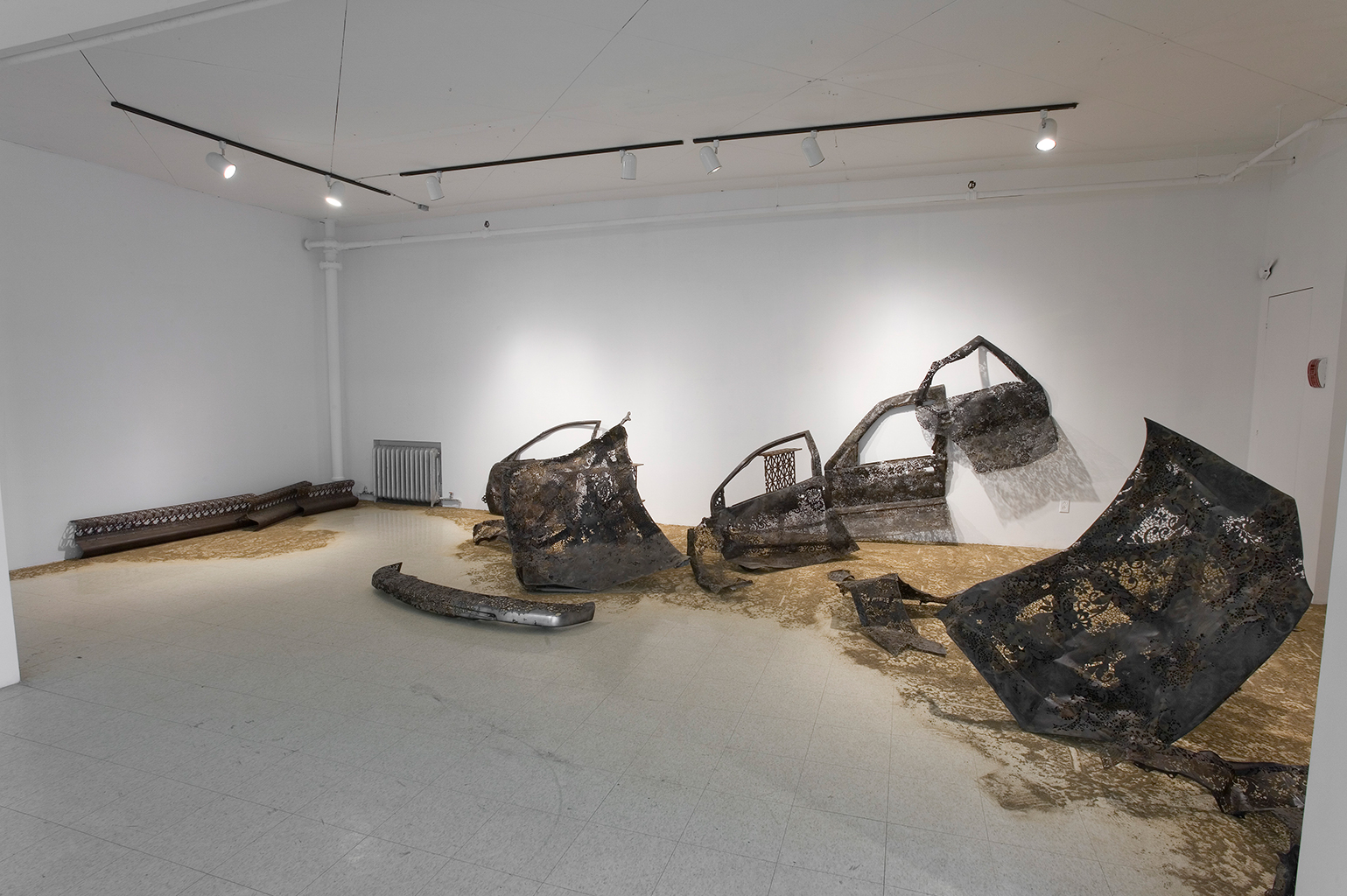Car Bombing
Text by Katie Apsey
In his essay “Ornament and Crime,” architect Adolf Loos helped usher in modernist trends with his infamous statement: “the evolution of culture marches with the elimination of ornament from useful objects.” Although he wrote this in the early 20th century, Modernism’s fear of “degenerate” embellishment and “feminine” excess has had long-reaching effects. But, New York-based artist Cal Lane has been able to turn such rhetoric on its head. In her multi-layered pieces, Lane covers objects normally associated with work and utility such as shovels, wheelbarrows, and car parts with intricate lace-like patterns through the use of an industrial blow torch. Like an illuminated manuscript, decoration overwhelms the surface. Ornamentation becomes one with the object, rendering it functionally useless yet aesthetically valued.
With layers of juxtaposed binaries, Lane’s work is paradoxical: feminine and masculine associations play against each other; the techniques of industry and handicraft meet; delicate designs overtake durable materials; and positive and negative spaces create a beautiful play of light and shadow on the surrounding floor and walls. By merging the high art connotations of sculpture with the aesthetic of craft, Lane plays with gendered assumptions. She says: “I am a woman and that is a certain category that comes with a certain social history and stereotypes…I like to work with and against these social/cultural expectations.” By performing through such conventions, her work shows the possibilities of visual language when materials are manipulated in uncharacteristic ways.
For example, in her installation “Filigree Car Bombing,” the viewer is confronted with the aftermath of an explosion. Car parts are torn, smashed and burnt, but they are also delicately pierced with intricate floral designs. The play of light through the warped shrapnel makes it appear more like draped fabric than metal. The gentleness of lace covers the violent incident, and the ‘beauty’ of design merges with the ‘ugliness’ of debris to create a contrast that disturbs the viewer’s expectations and requires a questioning of supposedly ‘automatic’ symbolic associations.
In her rug pieces, Lane sifts dirt through lace tablecloths onto the floor to leave behind ephemeral creations that originated in memories of her grandmother decorating cakes by sifting icing sugar onto them through dollies. The delicacy of the designs is amplified by the fragility of the material. It could be blown away or smeared at any time. In performing “women’s work” writ large (and dirty), Lane reclaims the value of the “simple” act of beautification. In Lane’s work, ornament is no longer a crime; it is a testament to the possibilities of art.





